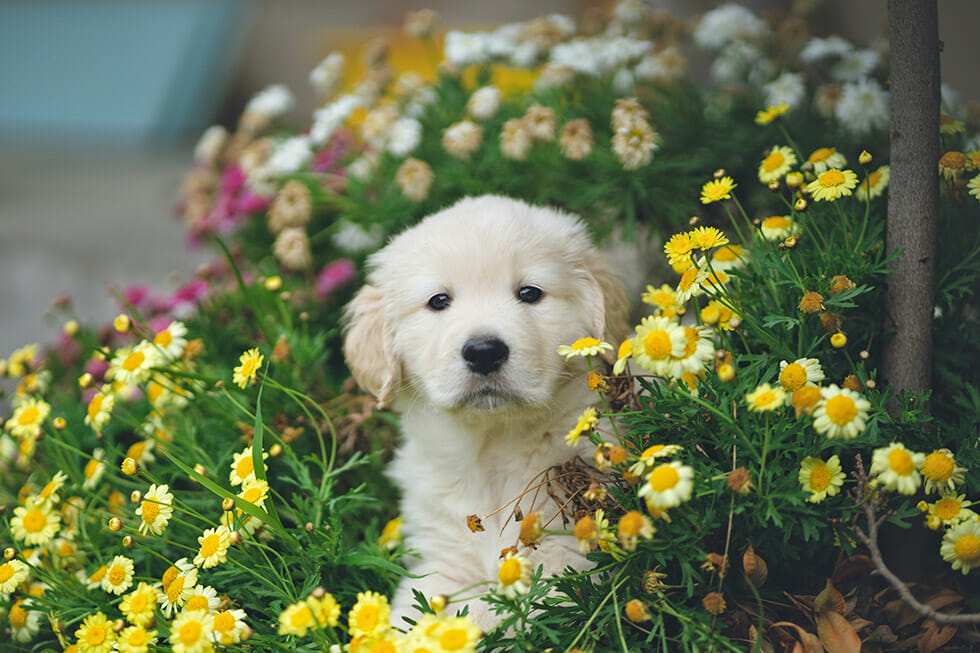
10 Common Dangerous Plants for Dogs and Cats
When you’re a new pet owner, be it a newly adopted puppy or a rescue, everything your pet does might set off alarm bells, especially when you’re not sure whether they’re safe or not. One of these possible habits is chewing on plants.
Cats, especially those who have access to plants, typically eat grass for digestive purposes. You may have observed a kitty eat grass, and then in a few minutes, throw it back up. One of the possible reasons is that they’re trying to expel intestinal parasites — at least this is what scientists suggest.
Animal behavior scientists explain that eating grass, especially in animals who don’t normally graze, is an evolutionary behavior rooted in their need to expel something bad that they’ve eaten that could be causing stomach pain.
While eating grass or leaves is normal, there are specific risks that your pet may face, especially if they have access to foliage or wild plants. Remember that your pets have little to no idea which plants are harmful to them. This means that it falls on you to determine whether something your pet is nibbling on is actually safe for them or not.
To help protect you and your furry friends, here are 10 of the most dangerous house or garden plants that you should keep away from your dogs or cats.
1. Dieffenbachia
These common indoor plants contain insoluble crystals of calcium oxalate which can cause drooling and vomiting, and may make it hard for them to breathe and swallow.

2. Marijuana
Said to be one of the more common plant poisoning that vets experience, this can cause loss of coordination, drooling, and even seizures and coma at higher doses.

3. Tulips
These contain lactones, which are especially concentrated in bulbs, and can cause depression, loss of appetite, drooling, vomiting and diarrhea.

4. Azalea
This entire plant is highly toxic for dogs. As little as 0.2% per body weight ingested can cause vomiting, diarrhea, and possibly lead to coma and death.

5. Amaryllis
This plant, especially its bulbs, contain Lycorine which can cause salivation, decreased appetite, vomiting and diarrhea.

6. Lily of the Valley
These lovely garden plants are highly toxic and can cause heart problems in dogs, leading to low blood pressure, seizures, and disorientation.

7. Daffodil
These flowers contain Lycorine, which can trigger severe vomiting, diarrhea, change in heart rhythm, and difficulty breathing.

8. Sago Palm
This plant is toxic to all pets and can cause vomiting, diarrhea, liver failure, and could even lead to death. The seeds are especially toxic.

9. Oleander
Every part of this plant is poisonous to pets as it contains cardiac glycosides which can affect heart rhythm and is potentially fatal.

10. Cyclamen
Eating any part of this plant can cause minor symptoms in pets, but if it eats the roots, it can affect the heart rhythm and can cause death.

Pesticides May Also Pose a Threat to Your Pets’ Safety
Aside from these poisonous plants, you should also be aware that grass and other plants in public spaces may be treated with synthetic pesticides and herbicides, which can be dangerous for pets. Heavy exposure to these chemicals may significantly affect your pets and can lead to irreversible side effects and severe illness.
If you’re planning on walking your pet or going to an outdoor park, ask around if the grass has been treated with any toxic chemicals. It may also be a good idea to wash your pets’ feet and underside every time you go out for a walk, just to make sure that they don’t track in pests and chemicals they might have gotten stuck to their fur. This will also prevent them from licking the chemicals out whenever they’re grooming.
Here’s How to Stop Your Pets From Eating Plants
If you notice that your pet is a habitual grass/plant-eater or you’ve noticed that your garden plants are getting nibbled on, there are a few tips you may follow to stop your dogs from eating the leaves off. Here are a few that you can try:
Try spraying lemon juice or vinegar on your plants
Dogs usually don’t like the sour taste of lemons and vinegar. Use this advantage to make your plants as undesirable for your dogs as possible. Aside from deterring pet nibbling, lemons and vinegar may also function as a natural pesticide for your garden.
Train your pets with the STOP command
If your pet is well-trained, you can order them to stop every time you find them nibbling on leaves. If you can’t get your dog properly trained, make sure you reinforce good behavior and be firm with bad behaviors.
Put a barricade around your plants
You may use materials to keep your pets away from your plants, such as wood barricades and fences. However, make sure you don’t use any materials that may harm your pets, such as chicken wire or hog wires.
Any Change in Your Pet’s Behavior After a Walk? Contact a Veterinarian Immediately
Your pet’s health is 100% your responsibility. If you accidentally miss them eating a poisonous plant, they could be in serious danger.
Make sure to be as attentive as possible, especially if you observe any changes in your pet’s behavior, such as sudden fatigue, vomiting and hypersalivation.
Immediately contact a veterinarian or bring your pet to the nearest animal hospital if you observe possible symptoms of poisoning. You’ll also find some useful information on which plants are dangerous for dogs here.
Nadia Crighton is a renowned and accomplished professional in the fields of Journalism, Public Relations, and Writing, with an extensive career spanning over 25 years, 20 of which have been dedicated to promoting the health and well-being of pets.
Get the latest Pet Insider Tips & News
We offer award-winning* pet insurance policies to protect your furry friend’s health and wellbeing. Get a quote today and give your pets the care they deserve.
Archives
Categories
- Cat Care (64)
- Cats (1)
- Dog Care (124)
- Guides (28)
- Health and Nutrition (200)
- Lifestyle and Activities (218)
- Media Release (23)
- Pet Care (246)
- Rescue Dogs (1)


